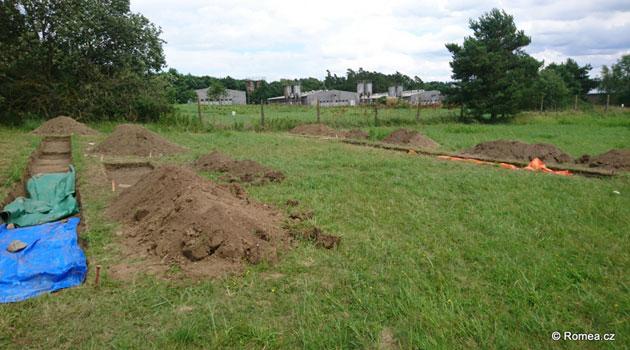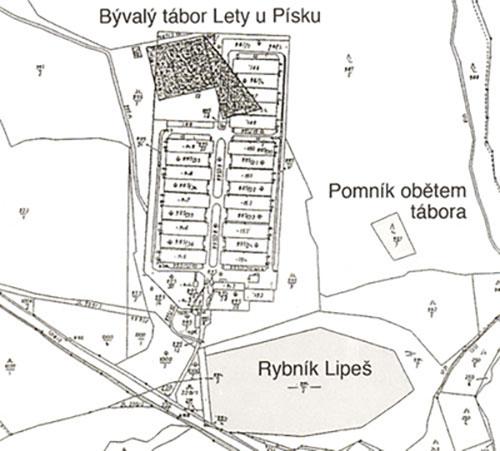Czech archaeological survey confirms human remains are located in the vicinity of current memorial to WWII-era concentration camp for Roma

An archaeological survey has just confirmed that human remains were buried in the vicinity of the existing memorial to Holocaust victims of Romani origin at Lety u Písku, Czech Republic. Čeněk Růžička, the chair of the Committee for the Redress of the Romani Holocaust (VPORH), and archaeologist Pavel Vařeka of the University of West Bohemia in Plzeň, who led the survey, have confirmed the findings to news server Romea.cz.
According to Lucie Horáková, the spokesperson for the Museum of Romani Culture, which administers the memorial, the findings will now be researched. She said there is a high probability that they belong to a victim of the camp.
The archaeologists and the Museum will present the details at a press conference next Tuesday. “The archaeologists found remains near the former camp and the place where the Lety Cultural Heritage Memorial is located today along with the monument designed by academic painter Zdeněk Hůlka,” the spokesperson said.
The location was previously used as a burial ground and Horáková said there could be mass graves there. “The skeleton we discovered is at a depth of about 160 cm,” Růžička of the VPORH told news server Romea.cz.
“The anthropologist confirmed it was an adult female skeleton whose front teeth had been forcibly knocked out somehow and she was buried in a wooden coffin,” he said. The Museum spokesperson noted that “It is now necessary to perform an analysis of the DNA in order to determine with certainty whether or not these remains belong to a camp victim.”
“The exploration of the location will continue,” the Museum spokesperson said. Růžička noted that “We also came across other indications of graves where apparently there are both adults and children.”
“Some are buried roughly 20-30 cm beneath the surface of the earth,” he said. “We now know the location of the remains of more Romani people.”
“We will ensure somehow that nobody will be walking over that place in the future,” Růžička said. According to previous statements by the director of the Museum of Romani Culture, Jana Horváthová, the entire survey should be completed by the end of September.
The first results will be announced by the Museum at a press conference on Tuesday, 10 September 2019 at 13:00 at the Lety Cultural Heritage Monument. At the close of September and beginning of October the architectural competition for the form of the future memorial there will begin.
The Museum would like to open a new memorial on the grounds of the former camp itself by 2023. Two years ago a first survey was done during which archaeologists found, for example, door handles or nails from the camp buildings, as well as trifles that probably belonged to the prisoners, such as beads or buttons.
However, according to the Museum director, that archaeological survey was not conducted on the part of the former grounds of the camp that overlapped with the then still-operational pig farm. The AGPI firm, which owned the farm at the time, still had pigs there and therefore did not allow a survey of that part of the former “Gypsy Camp”.
The Czech state has allocated more than CZK 100 million [EUR 4 million] for the demolition of the farm. The AGPI firm sold the farm to the state for CZK 450 million [EUR 17.4 million].
As of the time of the sale last year the firm still had about 13 000 pigs on the grounds in 13 feeding halls. According to historians, at least 1 309 Romani children, men and women passed through the camp at Lety from August 1942 until May 1943, 327 of whom died there and more than 500 of whom were deported to the Auschwitz extermination camp.
Fewer than 600 Romani prisoners returned to the Czech lands from the Nazi concentration camps after the war. According to estimates by experts, the Nazis and their collaborators murdered 90 % of the Czech and Moravian Roma.
